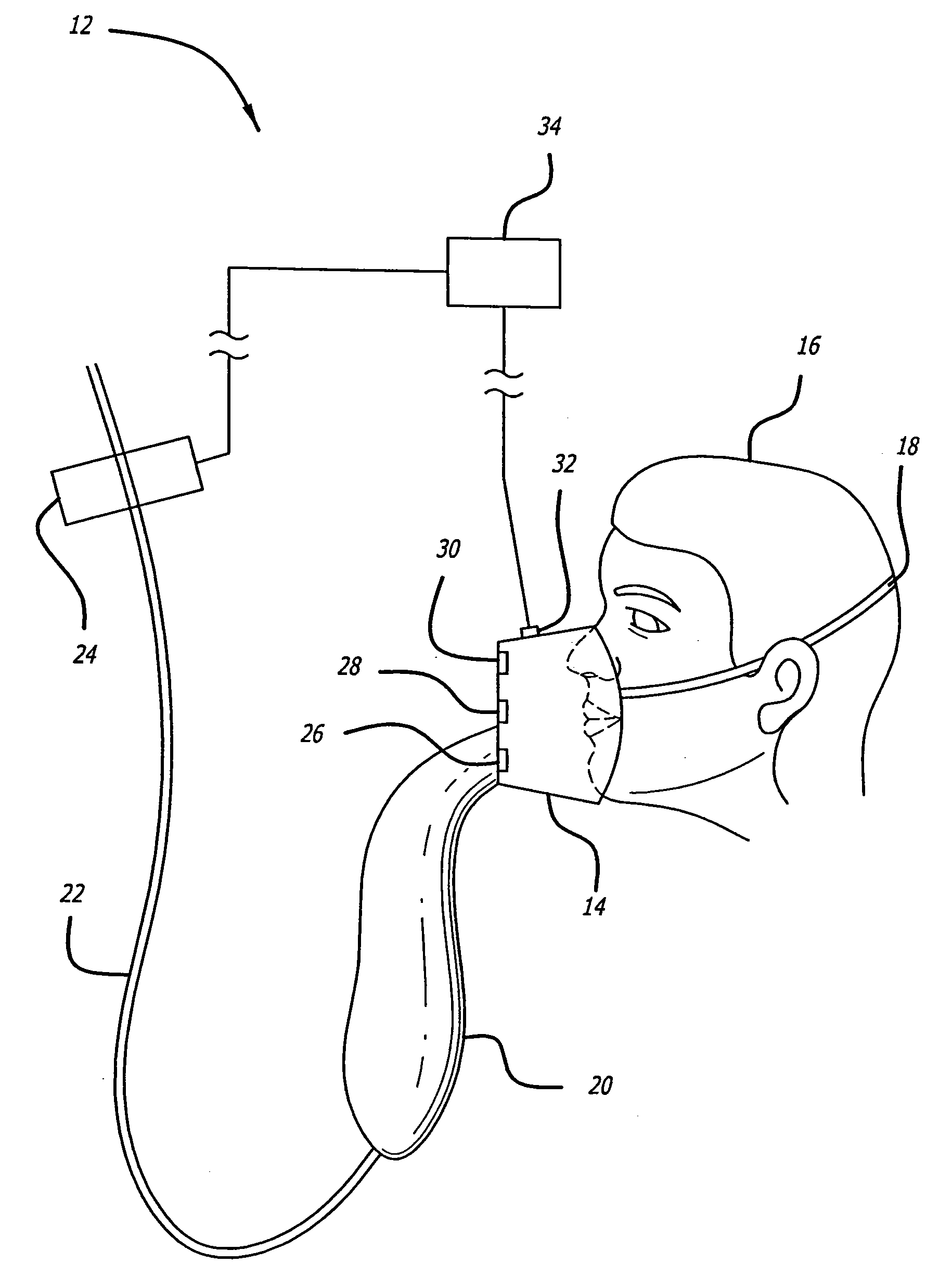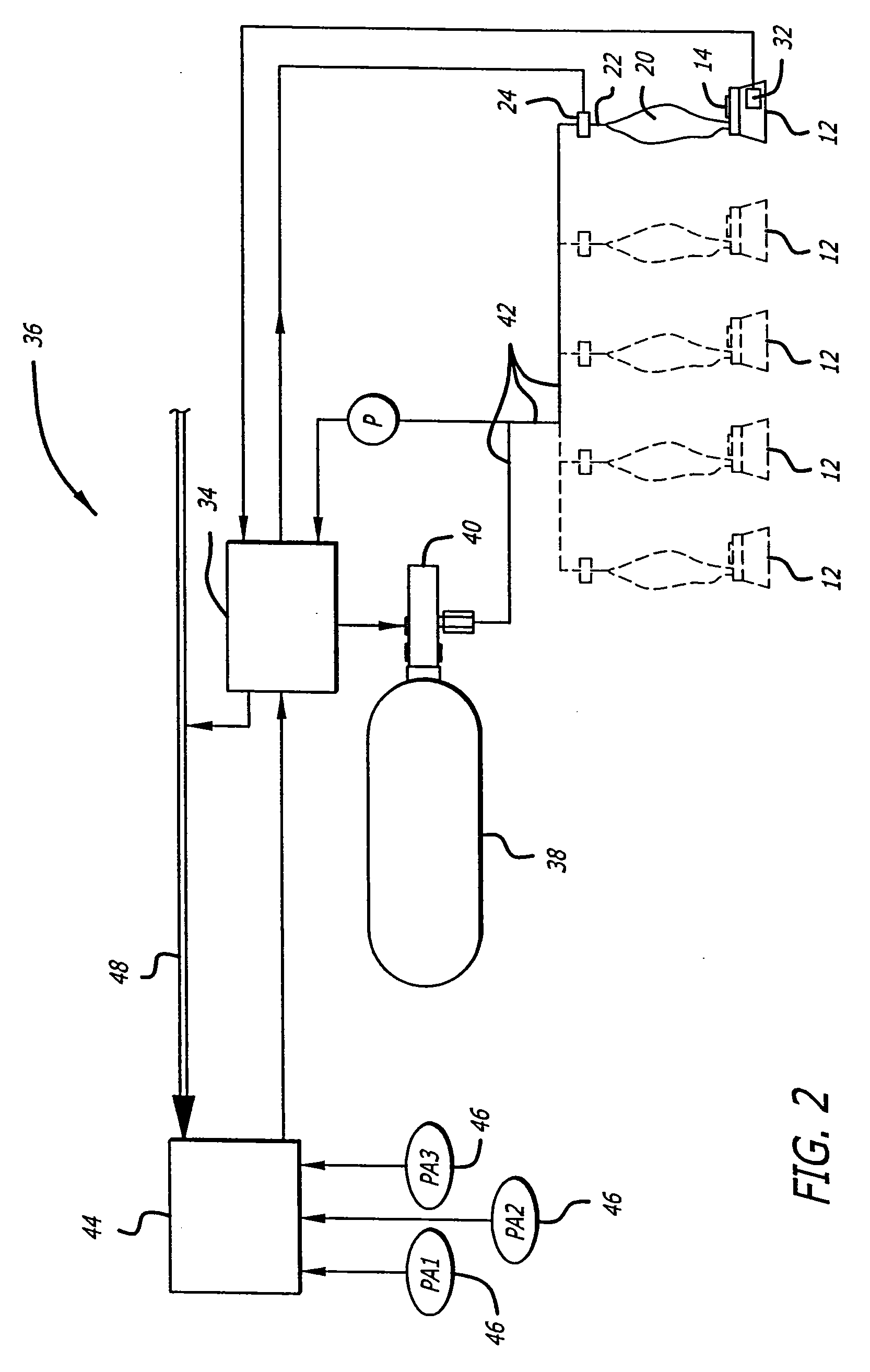Oxygen conservation system for commercial aircraft
a commercial aircraft and oxygen conservation technology, applied in the field of emergency oxygen supply systems, can solve the problems of adverse impact on the payload capacity and fuel consumption of the aircraft, and achieve the effects of reducing the amount of oxygen, less oxygen, and weight saving
- Summary
- Abstract
- Description
- Claims
- Application Information
AI Technical Summary
Benefits of technology
Problems solved by technology
Method used
Image
Examples
Embodiment Construction
[0022] The Figures illustrate a preferred embodiment of the present invention. The emergency oxygen supply system provides for enhanced efficiencies in the distribution and consumption of the oxygen that is carried aboard an aircraft for use in the event of a loss in cabin pressure. Upon deployment of the system, oxygen is distributed to individual passengers as a function of each individual passenger's respiration rate. The delivery of each allotment of oxygen to each passenger is timed so as to ensure that it is inhaled into that region of the lung that is most efficient at transferring oxygen into the blood while the volume of each allotment is selected to coincide with the approximated volume of such region of the lung.
[0023]FIG. 1 is a schematic illustration of the user interface 12 of the present invention. An oronasal mask 14 is configured to fit against a passenger's 16 face and is held in place by an elastic band 18 that extends about the back of the head. An inflatable re...
PUM
 Login to View More
Login to View More Abstract
Description
Claims
Application Information
 Login to View More
Login to View More - R&D
- Intellectual Property
- Life Sciences
- Materials
- Tech Scout
- Unparalleled Data Quality
- Higher Quality Content
- 60% Fewer Hallucinations
Browse by: Latest US Patents, China's latest patents, Technical Efficacy Thesaurus, Application Domain, Technology Topic, Popular Technical Reports.
© 2025 PatSnap. All rights reserved.Legal|Privacy policy|Modern Slavery Act Transparency Statement|Sitemap|About US| Contact US: help@patsnap.com



